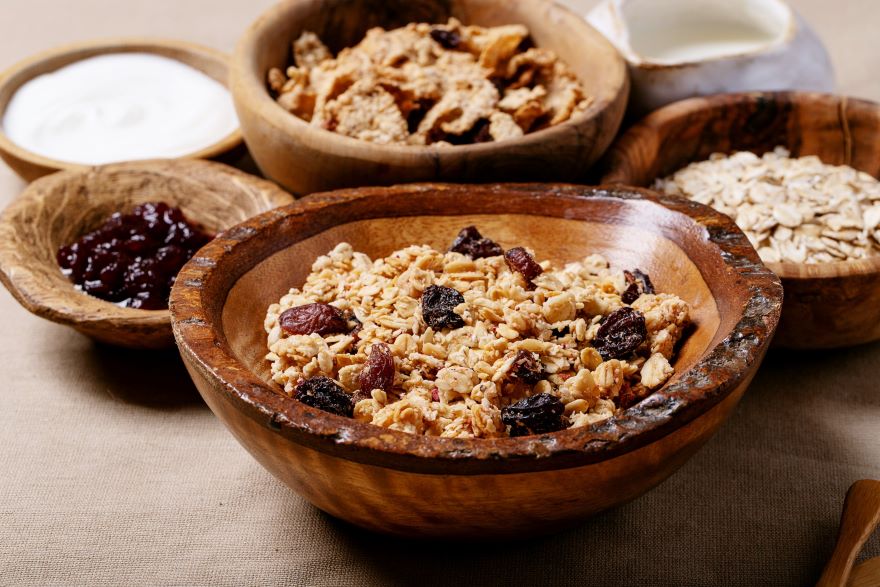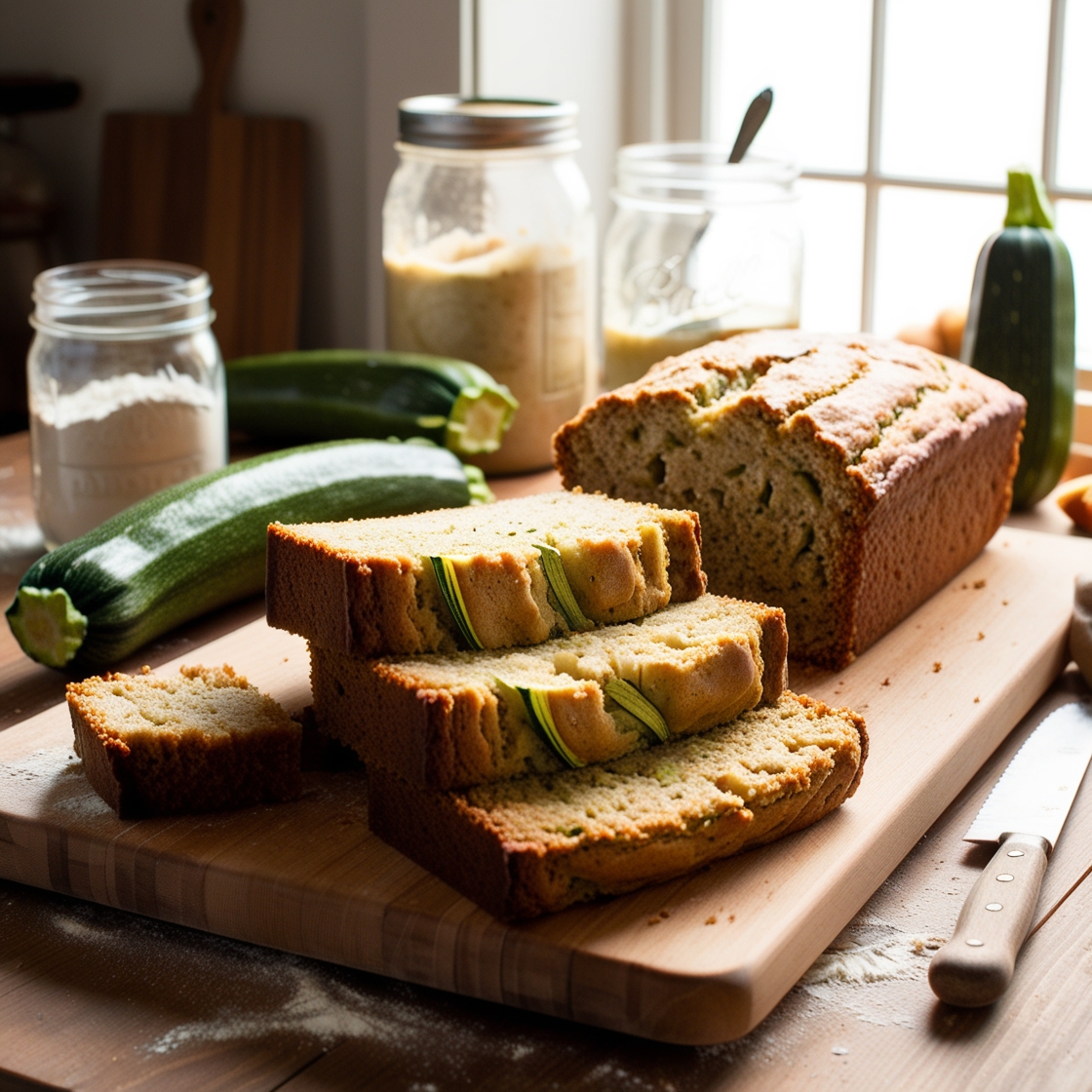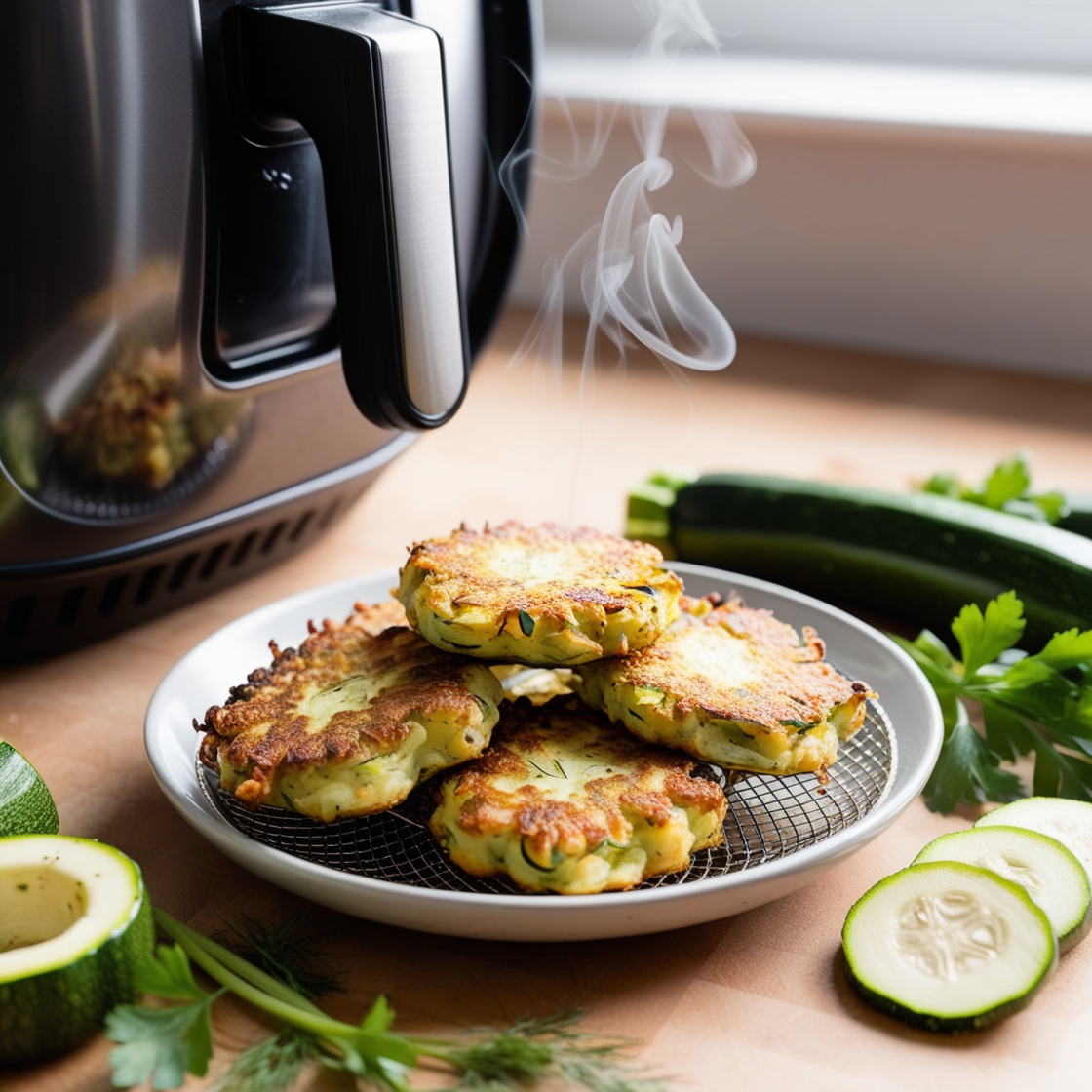I never thought I’d be the person preaching about raisin bran gluten-free, but here I am, completely transformed and eager to share my journey with you. It’s a tale of unexpected twists, delicious discoveries, and a total revolution in how I approach food and health. So, grab a bowl (and maybe a spoon), and let me tell you how this seemingly simple breakfast cereal changed my life.
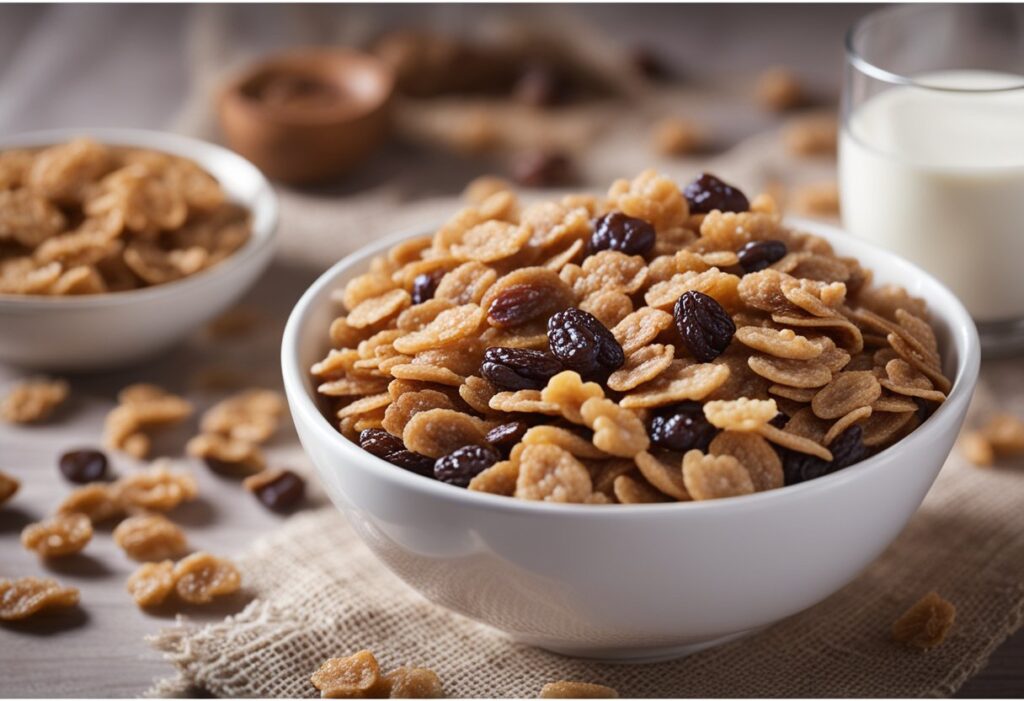
The Wake-Up Call: My Rock Bottom Moment
Picture this: It’s 7 AM, and I’m hunched over my kitchen counter, staring blankly at yet another bowl of bland, gluten-filled cereal. My stomach churns with familiar discomfort, and my mind races with frustration. I’d been diagnosed with celiac disease just months ago, and breakfast – once my favorite meal – had become a daily struggle.
“How did I get here?” I wondered, pushing away the uneaten bowl. I had always been the person who scoffed at “fad diets” and special food requirements, proudly declaring my love for all things wheat. But in that moment, I realized something had to change.
That morning, nursing a gluten-induced headache, I made a promise to myself. I would find a way to enjoy breakfast again without compromising my health. Little did I know, this vow would lead me down a path I never expected – straight to the world of homemade, gluten-free raisin bran.
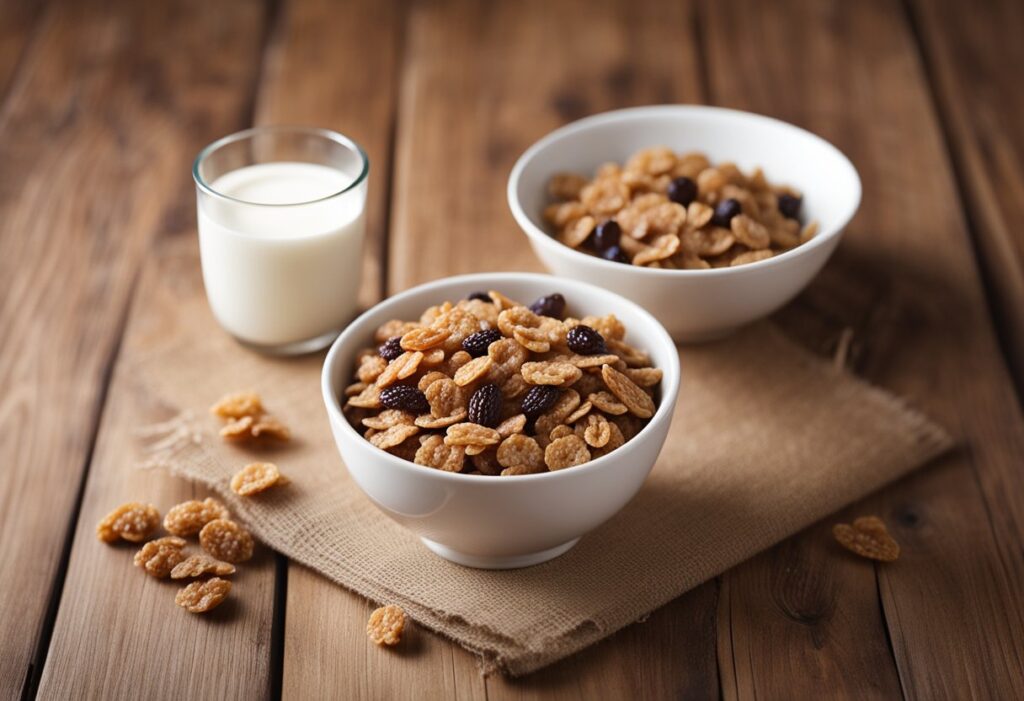
The Accidental Discovery: My First Gluten-Free Raisin Bran
Let me tell you about the raisin bran gluten-free disaster that actually changed my life. It was about a week into my desperate attempts at “eating gluten-free.” I was craving something crunchy and familiar (as usual) and found myself staring longingly at the cereal aisle in the grocery store.
That’s when I spotted them – a bag of gluten-free bran flakes and another of raisins. “Well, I can mix these, right?” I thought, tossing them into my cart with some nuts and seeds (because I’d heard somewhere that adding variety was good for you).
Back home, in a moment of desperation and creativity, I decided to mix my own gluten-free raisin bran. The result? A messy kitchen, sticky hands, and the most satisfying gluten-free breakfast I’d had in months.
Here’s that first, life-changing recipe:
Accidental Gluten-Free Raisin Bran
Ingredients:
- 2 cups gluten-free bran flakes
- 1/2 cup raisins
- 1/4 cup mixed nuts and seeds (I used almonds and pumpkin seeds)
- 1 tablespoon honey (optional)
Instructions:
- Mix the gluten-free bran flakes and raisins in a large bowl.
- Add the mixed nuts and seeds.
- If using, drizzle honey over the mixture and stir gently. Store in an airtight container.
As I delved deeper into creating the perfect gluten-free breakfast, I found that having a high-powered blender like the Vitamix 5200 was a game-changer. It allowed me to grind my own gluten-free flours and create smooth, creamy toppings for my raisin bran.
- Variable Speed Control: Easily adjust speed to achieve a variety of textures. The dial can be rotated at any point during the blend, so you’re in complete control
- Large Batches: The size and shape of the self-cleaning 64-ounce container is ideal for blending medium to large batches. Design Feature : Radial cooling fan and thermal protection system
- Hot Soup: The blades in the Vitamix container reach speeds fast enough to create friction heat, bringing cold ingredients to steaming hot in about six minutes
- Hardened Stainless-Steel Blades: Our aircraft-grade stainless steel blades are designed to handle the toughest ingredients, so from the first blend to the last, you get the same quality results
- Self-Cleaning: With a drop of dish soap and warm water, your Vitamix machine can clean itself in 30 to 60 seconds
As I took that first spoonful of my homemade gluten-free raisin bran, something clicked. The crunch of the bran flakes, the sweetness of the raisins, the nuttiness of the added seeds – it was like a revelation. For the first time since my celiac diagnosis, I felt like I was indulging in a breakfast that was both delicious and good for me.
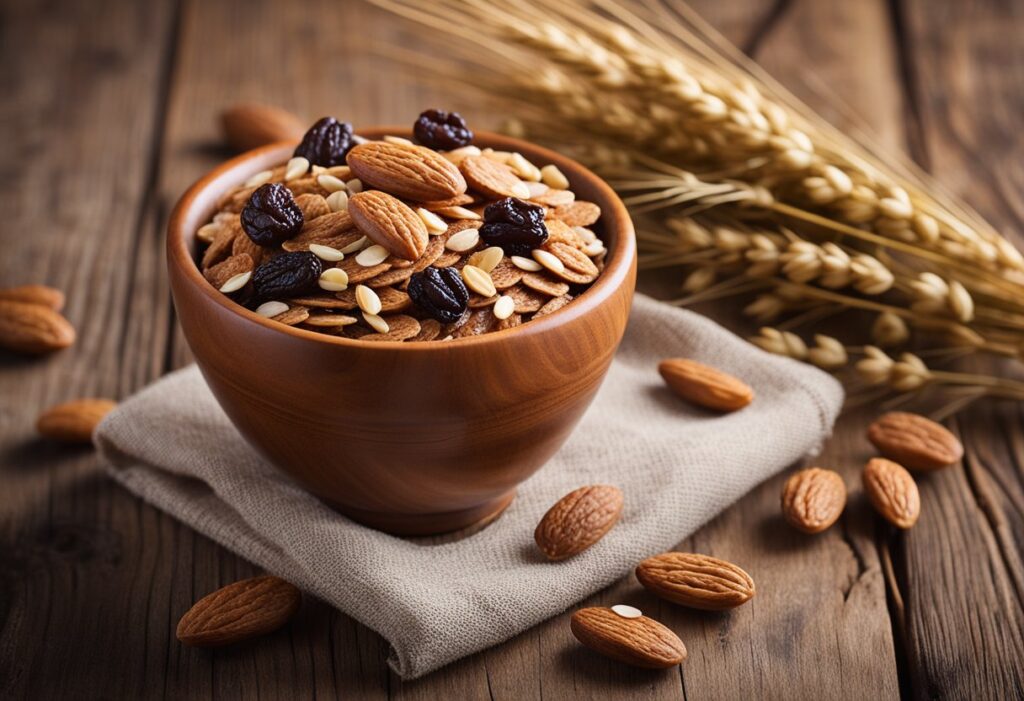
The Challenges: Overcoming My Gluten-Free Fears
Now, I’d love to say that from that moment on, I effortlessly transitioned into a gluten-free guru. But let’s be real – change is hard, especially when you’re trying to break a lifelong love affair with gluten.
There were days when all I wanted was to dive headfirst into a bowl of regular, gluten-filled cereal. Times when the ease of grabbing a quick pastry for breakfast tempted me beyond belief. I get it – changing habits is hard. Let’s talk about how we can make it easier together.
One of the biggest challenges was dealing with the fear of cross-contamination. I’d been so scared of getting sick that I’d almost given up on eating anything I hadn’t prepared myself. Now, I had to retrain my brain (and my pantry) to embrace safe, gluten-free options.
Here’s where my homemade gluten-free raisin bran came to the rescue again. I started experimenting with different variations, creating a whole arsenal of quick, healthy breakfasts to combat those cravings and fears.
Cinnamon Apple Gluten-Free Raisin Bran
Ingredients:
- 2 cups gluten-free bran flakes
- 1/2 cup raisins
- 1 apple, diced
- 1/4 cup chopped walnuts
- 1 teaspoon cinnamon
- 1 tablespoon maple syrup (optional)
Instructions:
- Mix the gluten-free bran flakes, raisins, and diced apple in a bowl.
- Add the chopped walnuts and sprinkle with cinnamon.
- If using, drizzle maple syrup over the mixture and stir gently.
- Enjoy immediately or store in an airtight container for later.
This variation became my go-to when I was craving something sweet and comforting. The mix of textures and flavors satisfied my urge for a more indulgent breakfast. The touch of cinnamon? That was my secret weapon against pastry cravings.
Every time I prepared a bowl of this, I felt like I was treating myself, not depriving myself. And that, my friends, was the key to making this gluten-free change stick.
The Ripple Effect: How Gluten-Free Raisin Bran Changed More Than Just My Breakfast
As I continued on this journey, something unexpected started happening. My newfound love for homemade, gluten-free raisin bran began to affect other areas of my life.
First, I noticed I had more energy. No more mid-morning crashes that used to send me reaching for sugary snacks. Instead, I found myself wanting to go for walks during my lunch break, something I hadn’t done in years.
My mood improved too. There’s something about nourishing your body with real, whole foods that makes you feel good from the inside out. I was sleeping better, waking up more refreshed, and generally feeling more positive about life.
But perhaps the most surprising change was in my relationships. As I shared my gluten-free raisin bran creations with friends and family, I found myself connecting with them in new ways. We’d swap recipes, talk about health goals, and support each other in making better choices.
I remember the first time I brought my “Tropical Twist Gluten-Free Raisin Bran” to a family brunch:
Tropical Twist Gluten-Free Raisin Bran
Ingredients:
- 2 cups gluten-free bran flakes
- 1/2 cup raisins
- 1/4 cup dried pineapple chunks
- 1/4 cup dried mango pieces
- 1/4 cup coconut flakes
- 2 tablespoons chia seeds
Instructions:
- Mix all ingredients in a large bowl.
- Store in an airtight container.
- Serve with your choice of milk (I love it with coconut milk for extra tropical flavor!)
As my family members tried this tropical twist on my gluten-free creation, I saw their eyes light up. “This is gluten-free?” my nephew asked incredulously. That moment of shared joy and surprise over something so simple yet delicious – it was priceless.
The Mindset Shift: Learning to Celebrate Small Wins
One of the most important lessons I learned on this journey was the power of celebrating small wins. In the past, I’d always been an all-or-nothing person when it came to diets and health kicks. I’d start with grand plans, get overwhelmed, and give up entirely.
But with my gluten-free raisin bran revolution, I learned to appreciate the little victories.
The first time I made it through a whole week without any gluten slip-ups? I celebrated. The day I realized I hadn’t had a stomachache in a month? Another celebration.
These small wins built up, creating a momentum that carried me forward. I started to see myself differently – not as someone perpetually struggling with a dietary restriction, but as someone actively making positive choices for their health.
To keep myself motivated, I started a “Gluten-Free Victory Journal.”
Each night, I’d write down one small win related to my health journey.
Some days, it was as simple as “Tried a new gluten-free grain today” or “Packed my own safe lunch for work.”
Other days, I’d celebrate creating a new gluten-free raisin bran recipe or hitting a personal fitness milestone.
This practice of acknowledging my progress, no matter how small, was transformative. It shifted my focus from what I was giving up to what I was gaining – health, energy, and a whole new outlook on life.

Spreading the Joy: Becoming the Unexpected Gluten-Free Guru
As my journey progressed, something funny started happening. Friends, family, and even colleagues began coming to me for advice. Me – the former gluten enthusiast – was now being asked for gluten-free eating tips!
At first, it felt strange. Who was I to give advice? But then I realized – my story resonated with people precisely because I wasn’t some lifelong health nut. I was just a regular person who had found a way to make gluten-free eating enjoyable and sustainable.
So, I embraced my new role as the “Gluten-Free Raisin Bran Guru.” I started sharing my recipes more widely, even hosting little workshops where I’d teach friends how to make their own gluten-free breakfasts.
One of the crowd favorites was always the “Savory Spice Gluten-Free Raisin Bran”:
Savory Spice Gluten-Free Raisin Bran
Ingredients:
- 2 cups gluten-free bran flakes
- 1/2 cup raisins
- 1/4 cup pumpkin seeds
- 1/4 cup sunflower seeds
- 1 teaspoon smoked paprika
- 1/2 teaspoon garlic powder
- 1/4 teaspoon sea salt
- 2 tablespoons olive oil
Instructions:
- Preheat oven to 300°F (150°C).Mix all dry ingredients in a large bowl.
- Drizzle olive oil over the mixture and stir to coat evenly.
- Spread on a baking sheet and bake for 15-20 minutes, stirring halfway through.
- Let cool completely before storing in an airtight container.
For those times when I wanted to add a warm, toasty element to my gluten-free raisin bran, the Breville Smart Oven Air Fryer Pro became my secret weapon. It’s perfect for toasting nuts and seeds or even making crispy bran flakes from scratch.
- The Breville Smart Oven Air Fryer Pro with Element iQ System is a versatile countertop oven allowing you to roast, air fry and dehydrate; Super convection reduces cooking time by up to 30%; Choose from 13 cooking functions; Includes interior oven light
- ELEMENT iQ SYSTEM: With 5 independent quartz elements, smart algorithms steer oven's power where and when it's needed to create a tailored cooking environment; Sensing and digital PID temperature control eliminate cold spots for precise cooking
- AIR FRY AND DEHYDRATE SETTINGS: Air fry family favorites like French fries; Higher temperatures combine with super convection (maximized air flow) for crispy golden, air-fried foods; Oven also dehydrates up to 4 trays at once of a wide range of foods
- SUPER CONVECTION TECHNOLOGY: Electric air fryer's 2 speed convection fan (super & regular) offers more cooking control; Super convection provides greater volume of hot air to ensure fast and even heat distribution for air frying, dehydration and roasting
- 13 COOKING FUNCTIONS: Versatile countertop oven and air fryer with 13 functions for your kitchen; Toast, Bagel, Broil, Bake, Roast, Warm, Pizza, Proof, Air Fry, Reheat, Cookies, Slow Cook, and Dehydrate; Like having a toaster, pizza oven and more in one
Watching people’s faces light up as they tried this savory twist on gluten-free raisin bran, knowing they were enjoying something both delicious and safe – was incredibly rewarding. I realized that by sharing my journey and my creations, I was helping others find their own path to healthier, gluten-free eating.
The Ongoing Journey: Embracing Continuous Growth
As I sit here writing this, surrounded by a kitchen full of gluten-free ingredients and various versions of my raisin bran creations, I can’t help but marvel at how far I’ve come. From the person who once thought gluten-free meant taste-free to someone who gets excited about trying new grain combinations – the transformation has been nothing short of remarkable.
But here’s the thing – I’m not done growing. This journey has taught me that there’s always more to learn, more to explore, and more ways to improve. I’m constantly experimenting with new recipes, learning about different gluten-free grains, and finding ways to make my raisin bran even more nutritious and delicious.
As my recipes became more elaborate, I found the KitchenAid Stand Mixer to be an invaluable tool. It made mixing large batches of my gluten-free raisin bran a breeze, especially when incorporating sticky ingredients like honey or nut butters.
- #1 MIXER BRAND IN THE WORLD* *Source: Euromonitor International Ltd. for retail sales revenue, USD, all retail channels. More information, including date ranges available at: mixerclaim.kitchenaid.com
- Built to take it all on with the durable and built-to-last metal construction, and 59 touchpoints around the mixer bowl for great mixing results.
- 4.5 Quart Stainless Steel Bowl to mix up to 8 dozen cookies* in a single batch. Dishwasher safe. *Using the flat beater; 28g dough each
- Easily add ingredients with the tilt-head design, because you'll have better access to the bowl - lock the head in place while mixing
- 10 speeds for nearly any task or recipe, from mixing ingredients together on the stir speed, to whipping cream at speed 8, you'll get thorough ingredient incorporation every time
And you know what? I still have days when I miss my old gluten-filled favorites. The difference now is that I have the tools and the mindset to make choices that align with my health goals without feeling deprived.
To those of you reading this who might be at the beginning of your own gluten-free journey, or perhaps contemplating making a change for your health, I want to say this: It’s not about being perfect. It’s about finding what works for you, what brings you joy, and what makes you feel good in your own skin.
Maybe for you, it won’t be gluten-free raisin bran. Maybe you’ll discover a passion for quinoa bowls, or homemade gluten-free granola, or something else entirely. The key is to keep exploring, keep trying new things, and most importantly, to be kind to yourself along the way.
A Call to Action: Your Turn to Bloom
As I wrap up my story, I want to leave you with a challenge. This week, I invite you to try creating your own version of gluten-free raisin bran. It doesn’t have to be complicated – start with some gluten-free bran flakes, add your favorite dried fruits and nuts, and let your imagination run wild.
Share your creations with friends or family. Start a conversation about healthy, gluten-free eating that comes from a place of enjoyment rather than restriction. And remember, every small step counts.
Who knows? Maybe you’ll stumble upon your own unexpected health revolution. Maybe you’ll discover a new passion, or a new way of nourishing your body and soul. Whatever happens, know that you’re not alone on this journey.
From one former gluten lover to another – here’s to crunchy, fruity, gluten-free adventures in health. May your bran be crispy, your raisins be plump, and your journey be joyful.
Now, if you’ll excuse me, I have a date with a bowl of my latest gluten-free raisin bran creation. Who says healthy can’t be delicious?
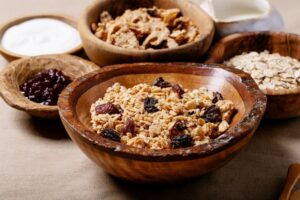
*We may earn a commission for purchases made using our links. Please see our disclosure to learn more.

